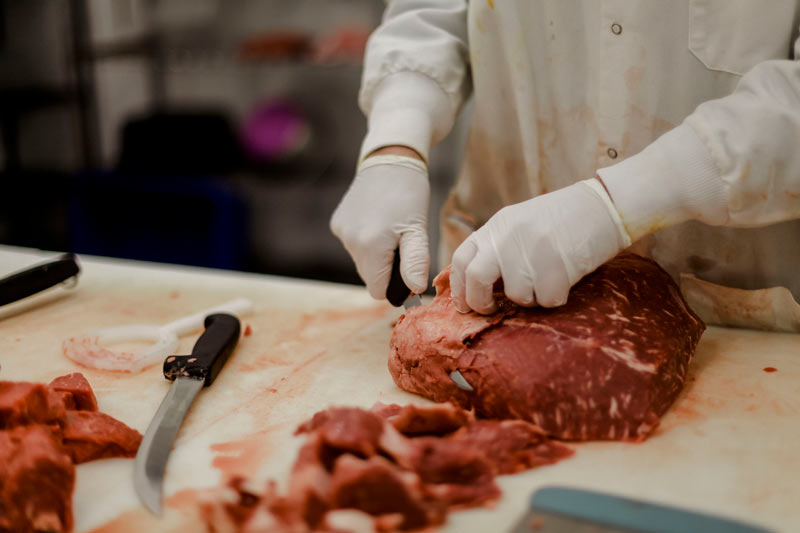Find for the best meat selection at Bagley Meat Market Edwardsville IL near you.
Find for the best meat selection at Bagley Meat Market Edwardsville IL near you.
Blog Article
How to Pick the Perfect Cut of Meat From a Trusted Meat Market
Picking the optimal cut of meat from a trusted meat market calls for a thoughtful approach that balances high quality, cooking function, and budget plan. Recognizing the numerous types of meat and their corresponding cuts is vital, as is engaging with your butcher to acquire insights right into sourcing and prep work.
Recognizing Meat Cuts


For instance, the tenderloin is prized for its buttery appearance and minimal connective cells, making it excellent for quick food preparation methods such as grilling or pan-searing. On the other hand, tougher cuts like the brisket or shank advantage from slow cooking strategies to damage down collagen, generating abundant and delicious outcomes.
Additionally, the fat web content of a cut plays an important duty in taste account and dampness retention during cooking. Cuts with greater fat web content, such as ribeye, supply an even more robust taste, while leaner alternatives, like sirloin, might need careful preparation to avoid dry skin (bagley meat market edwardsville il). Comprehending these subtleties enables informed options that boost culinary creations, making sure that each meal showcases the ideal qualities of the chosen meat
Elements to Consider
When choosing the perfect cut of meat, numerous critical aspects come right into play that can dramatically influence the last meal. Most importantly, think about the sort of meat you want-- beef, pork, lamb, or poultry-- as each deals one-of-a-kind flavors and textures. The certain cut within that group is similarly essential; for example, ribeye delivers rich marbling, while tenderloin offers a lean, buttery appearance.
An additional variable is the cooking approach you plan to use. Cuts suitable for barbecuing, such as T-bones or sirloins, vary from those better fit for slow-moving cooking, like chuck roasts or shanks. Furthermore, quality is extremely important; always select meat with a vibrant color and company texture, signaling quality and correct handling.
In addition, consider the source of the meat. A trusted meat market usually supplies in your area sourced, hormone-free, and grass-fed choices, which can enhance taste and nutritional worth. Last but not least, your budget will lead your selection. Costs cuts may use remarkable taste, but there are likewise cost-efficient alternatives that, when prepared appropriately, can generate delicious results. Balancing these variables will assist you pick the perfect cut for your cooking requirements.
Inquiries to Ask Your Butcher
A butcher's experience can be very useful when picking the suitable cut of meat for your culinary endeavors. Start by inquiring regarding the resource of the meat.
Next, ask about the different cuts available for the kind of meat you like. A well-informed butcher will discuss the nuances of each cut, assisting you choose one that matches your food preparation approach and preferred outcome. Do not be reluctant to inquire about the best cooking techniques for a details cut; butchers typically have ideas that can improve your recipe.
It's also sensible to inquire about the meat's quality. Ask about the distribution timetable and just how commonly the meat is replenished. This will certainly give you confidence in the quality of what you are purchasing. Ask for referrals based on your individual preference preferences. A great butcher will be excited to share their experience and recommend cuts that will thrill your taste. Engaging your butcher with these questions can significantly enhance your meat choice experience.
Acknowledging Quality Meat

Structure is one more essential element; quality meat should feel firm and slightly bouncy to the touch. Avoid you can try here any type of cuts that really feel slimy or excessively completely dry, as these can suggest putridity or improper storage. Furthermore, smell plays a crucial role; fresh meat needs to have a tidy, neutral scent, while any kind of off-putting or sour smells are red flags.
Last but not least, think about the resource. Buying from a respectable meat market, where the meat's beginning is understood, can guarantee better criteria. By concentrating on these indicators-- shade, marbling, texture, scent, and resource-- you can confidently pick cuts that will boost your cooking and dining experience.
Food Preparation Techniques for Each Cut
Choosing the appropriate cooking method is vital for making the most of the taste and inflammation of each cut of meat. Various cuts possess special features that dictate one of the most suitable cooking strategies.
For tender cuts, such as filet mignon or ribeye, dry warmth approaches like grilling, broiling, or pan-searing are excellent. On the other hand, tougher cuts, such as chuck or brisket, benefit from moist heat methods, consisting of braising or slow-moving food preparation.
Pork chops and hen breasts are versatile and can be prepared using both completely dry and damp techniques. While barbecuing or roasting can generate tasty outcomes, poaching or sautéing can keep moisture and inflammation. For lamb, techniques like toasting or braising are recommended, as they match the meat's durable taste.
Final Thought
To conclude, picking the perfect cut of meat from a respectable meat market necessitates an extensive understanding of meat cuts and factor to consider of different factors, including resource, top quality, and food preparation methods. Involving with the butcher with targeted inquiries can produce important insights and recommendations tailored to certain cooking needs. Focusing on both high quality and budget plan see this site will improve the overall gastronomic top article experience, guaranteeing that the selected cut meets assumptions in both taste and prep work.
Report this page